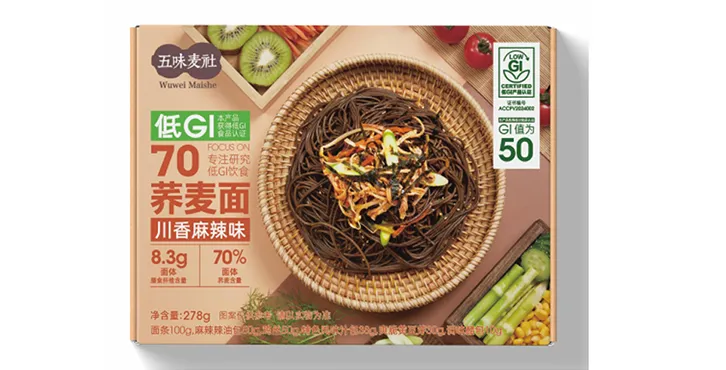Soba Noodles as a Healthy Option for Diabetics and Blood Sugar Control
Soba Noodles A Healthy Choice for Diabetics
Soba noodles, made from buckwheat flour, have gained popularity not only for their unique flavor but also for their potential health benefits. For individuals managing diabetes, incorporating soba noodles into their diet can be a good alternative to traditional wheat-based pastas. This article will explore the nutritional profile of soba noodles, their impact on blood sugar levels, and tips on how to include them in a diabetes-friendly diet.
Nutritional Benefits of Soba Noodles
Soba noodles are renowned for their nutritional value. Unlike regular pasta that is primarily composed of refined wheat flour, buckwheat is a whole grain. This means that soba noodles provide more fiber, essential nutrients, and antioxidants compared to traditional pasta. A typical serving of soba noodles contains
- Protein Buckwheat is a complete protein, which means it contains all nine essential amino acids. This can help with muscle repair and overall health. - Fiber High fiber content aids in digestion and helps maintain stable blood sugar levels. Fiber slows down the absorption of sugar in the bloodstream, preventing spikes in blood glucose. - Vitamins and Minerals Soba noodles are a good source of micronutrients, including magnesium, manganese, and B vitamins, which are essential for energy metabolism and overall well-being.
For diabetics, these nutrients can be particularly beneficial in managing health and maintaining energy levels throughout the day.
Impact on Blood Sugar Levels
One of the most crucial aspects of managing diabetes is controlling blood sugar levels. Soba noodles have a lower glycemic index (GI) compared to traditional pasta. The glycemic index measures how quickly a food causes blood sugar levels to rise. Foods with a low GI release glucose slowly into the bloodstream, minimizing spikes in blood sugar.
The fiber content in soba noodles also plays a significant role in regulating glucose levels. By incorporating them into meals, diabetics can effectively manage their carbohydrate intake while still enjoying a variety of dishes. This can lead to better blood sugar control and reduce the risk of complications associated with diabetes.
soba noodles for diabetics

Incorporating Soba Noodles into Your Diet
Here are some delicious and diabetes-friendly ways to enjoy soba noodles
1. Cold Soba Salad Boil the noodles, then rinse them under cold water. Toss with fresh vegetables such as cucumbers, bell peppers, and carrots. Add a light sesame or soy dressing for flavor, and top with grilled chicken or tofu for a protein boost.
2. Soba Noodle Soup Prepare a hearty broth with low-sodium chicken or vegetable stock. Add boiled soba noodles, along with vegetables like bok choy or spinach, and protein sources such as shrimp or tofu. This comforting dish is perfect for any season.
3. Stir-Fried Soba Noodles Stir-fry vegetables such as broccoli, snap peas, and bell peppers in a small amount of olive oil or sesame oil. Add cooked soba noodles and your choice of protein, then drizzle with a low-sodium soy sauce or teriyaki sauce for flavor.
4. Soba Noodles with Peanut Sauce Create a creamy peanut sauce using natural peanut butter, soy sauce, and a touch of honey (or a sugar substitute). Toss the soba noodles with the sauce, fresh veggies, and grilled chicken for a filling meal.
Conclusion
In summary, soba noodles are not only a versatile and tasty addition to a variety of dishes but also a smart choice for those living with diabetes. Their high fiber content, lower glycemic index, and rich nutritional profile can support better blood sugar management while providing essential nutrients. By experimenting with different recipes and flavors, diabetics can enjoy a satisfying and balanced diet without sacrificing taste. Always consult with a healthcare professional or a registered dietitian when making significant changes to your diet, especially when managing diabetes.
-
Unleash Your Inner Chef with Delectable Italian Pasta CreationsNewsAug.01,2025
-
Savor Health and Flavor: Irresistible Soba Noodles for Sale Await!NewsAug.01,2025
-
Nourish Your Body with Premium Organic Ramen - A Culinary Delight AwaitsNewsAug.01,2025
-
Elevate Your Dishes with Our Exquisite Kinds of Egg NoodlesNewsAug.01,2025
-
Dive into Flavorful Convenience with Our Ramen OfferingsNewsAug.01,2025
-
Discover Exquisite Types of Naengmyeon and Chilled Soba NoodlesNewsAug.01,2025
-
Is Whole Wheat Pasta Healthy?NewsMay.30,2025
Browse qua the following product new the we

















































































































